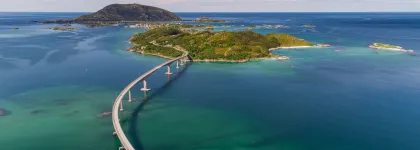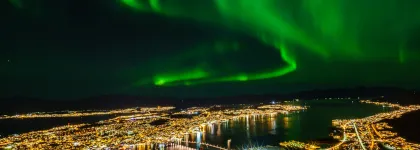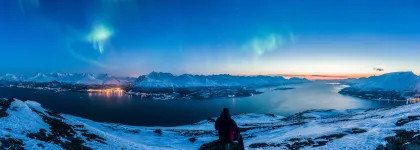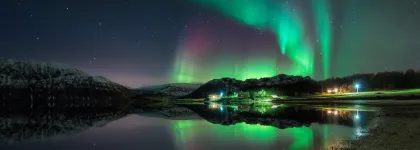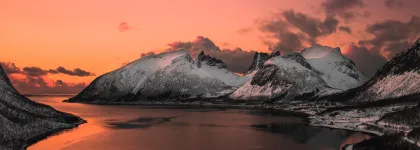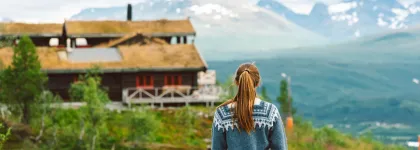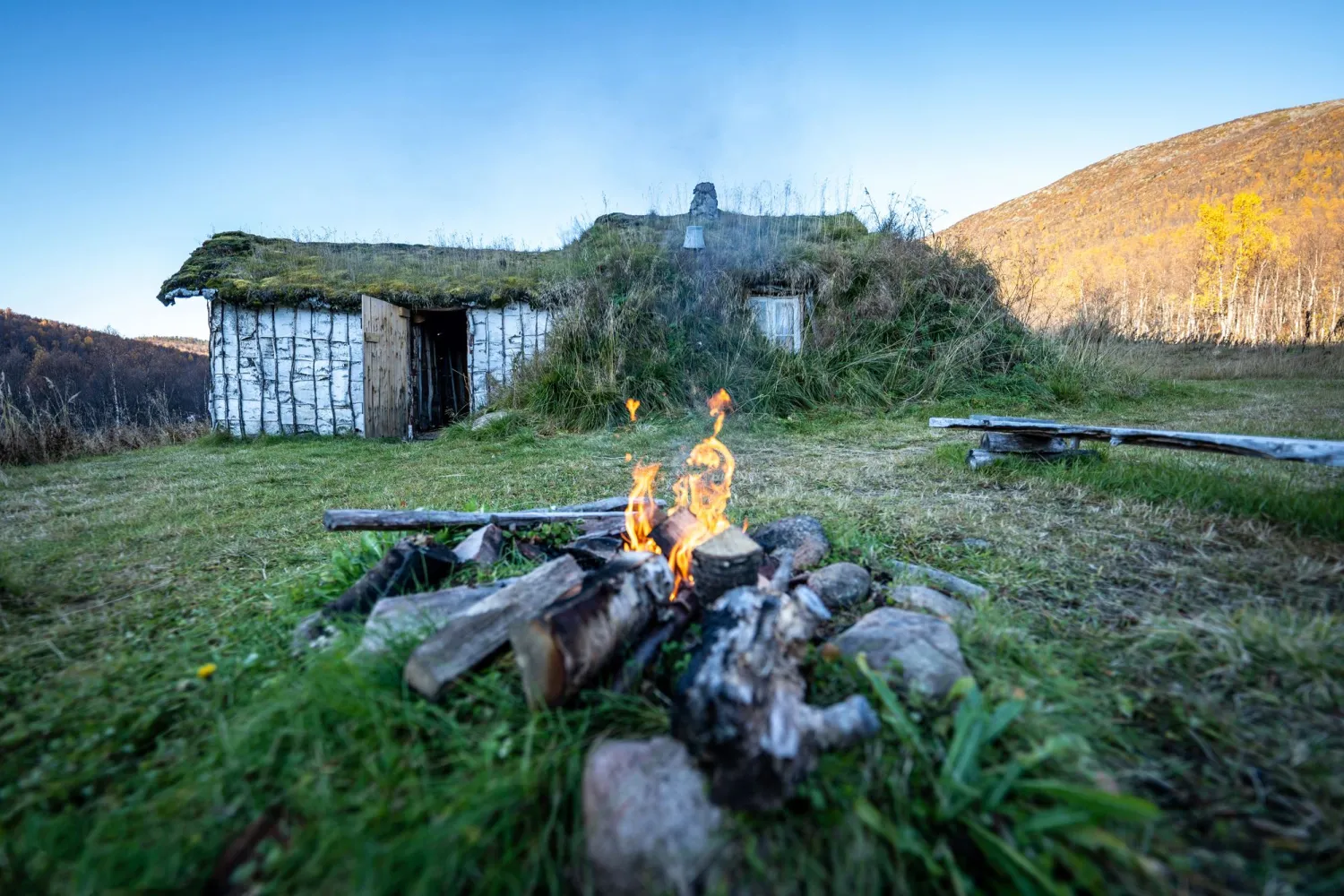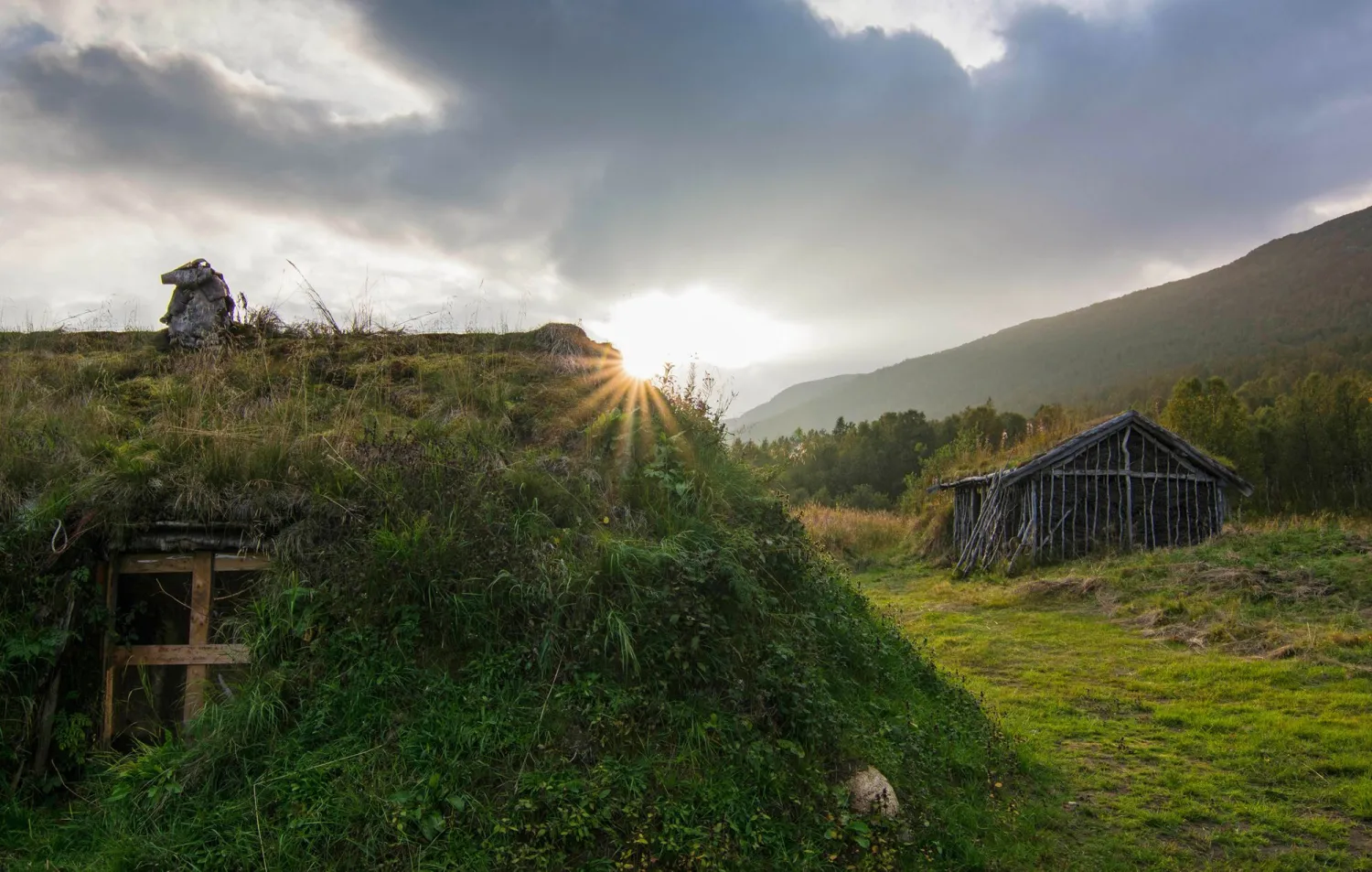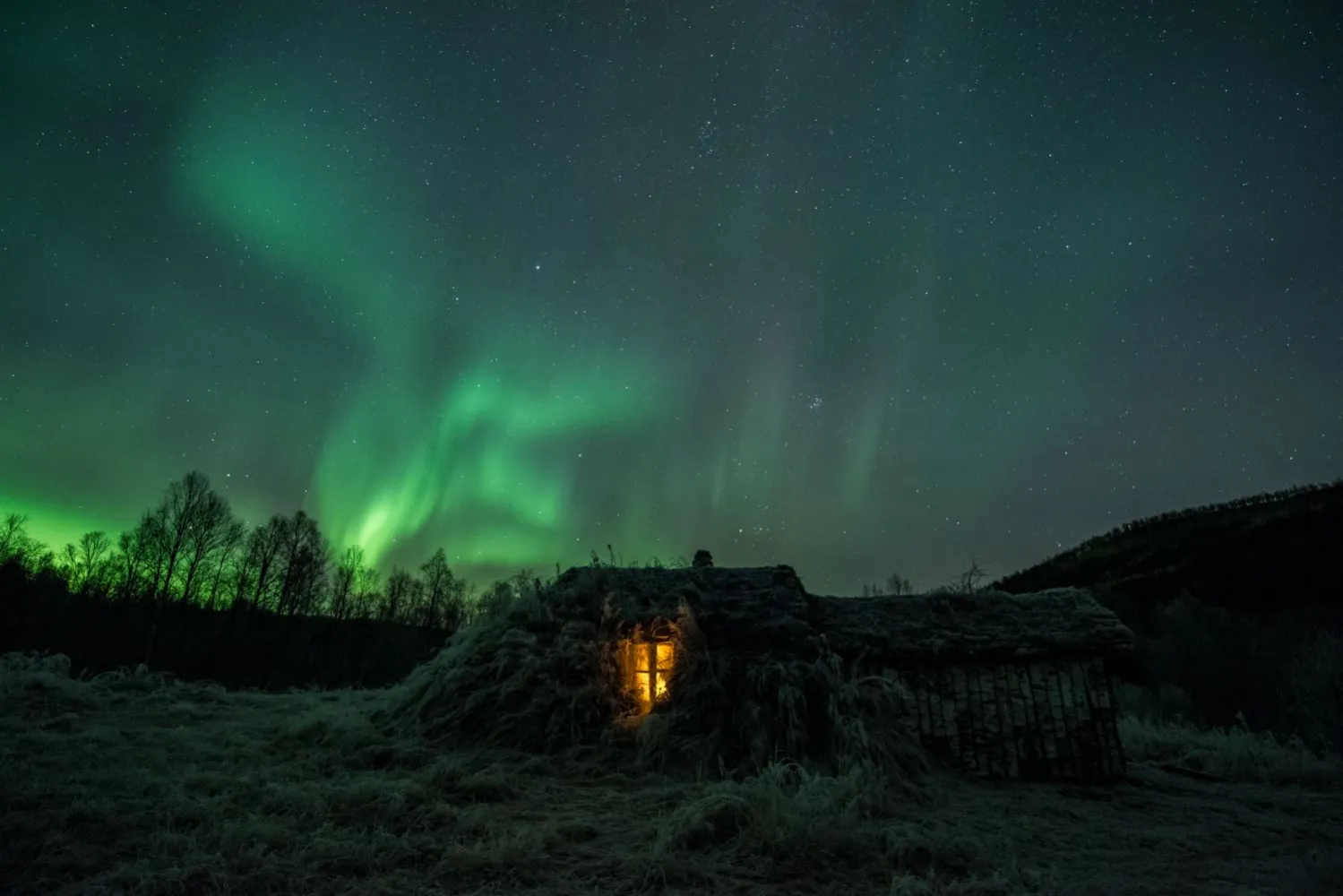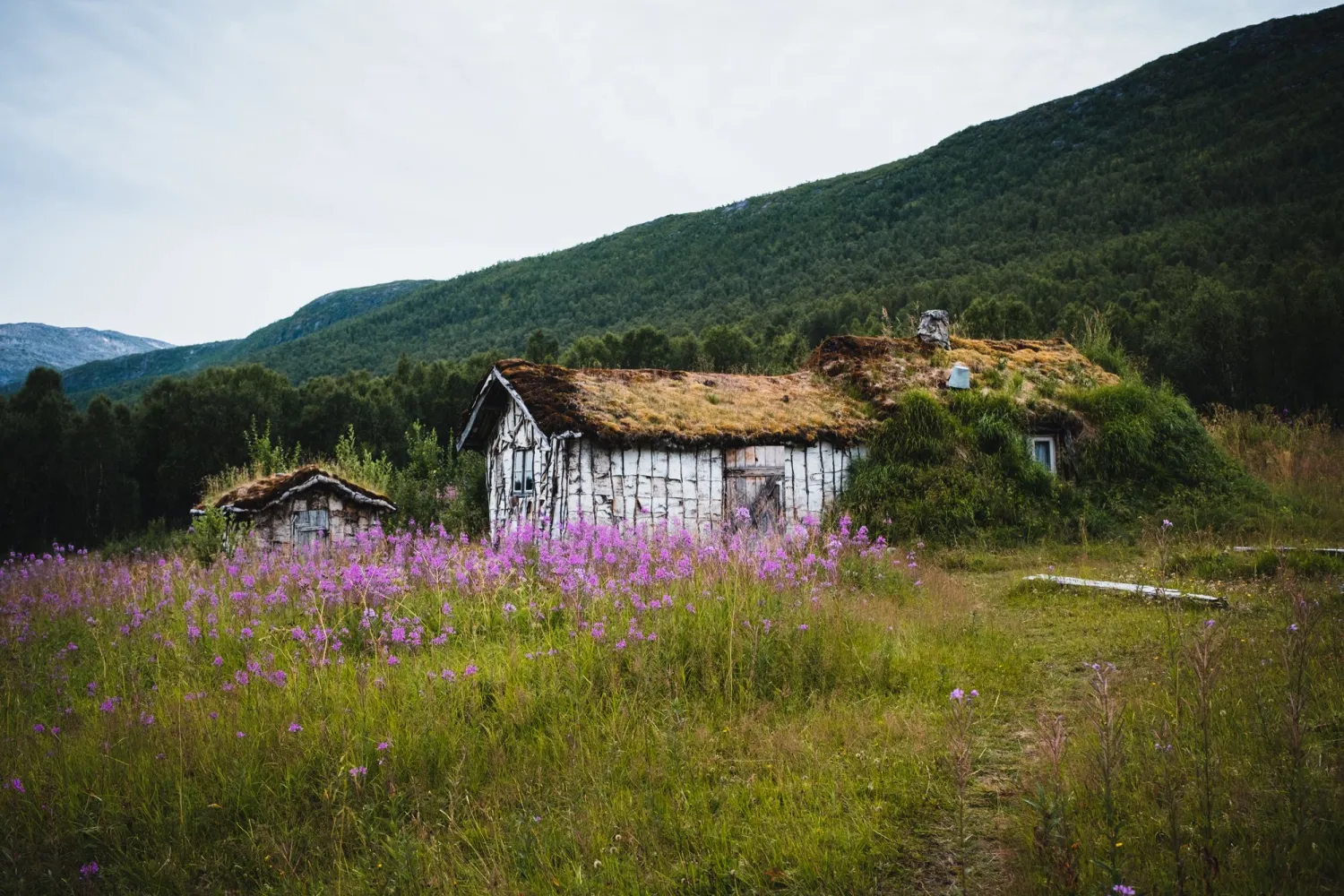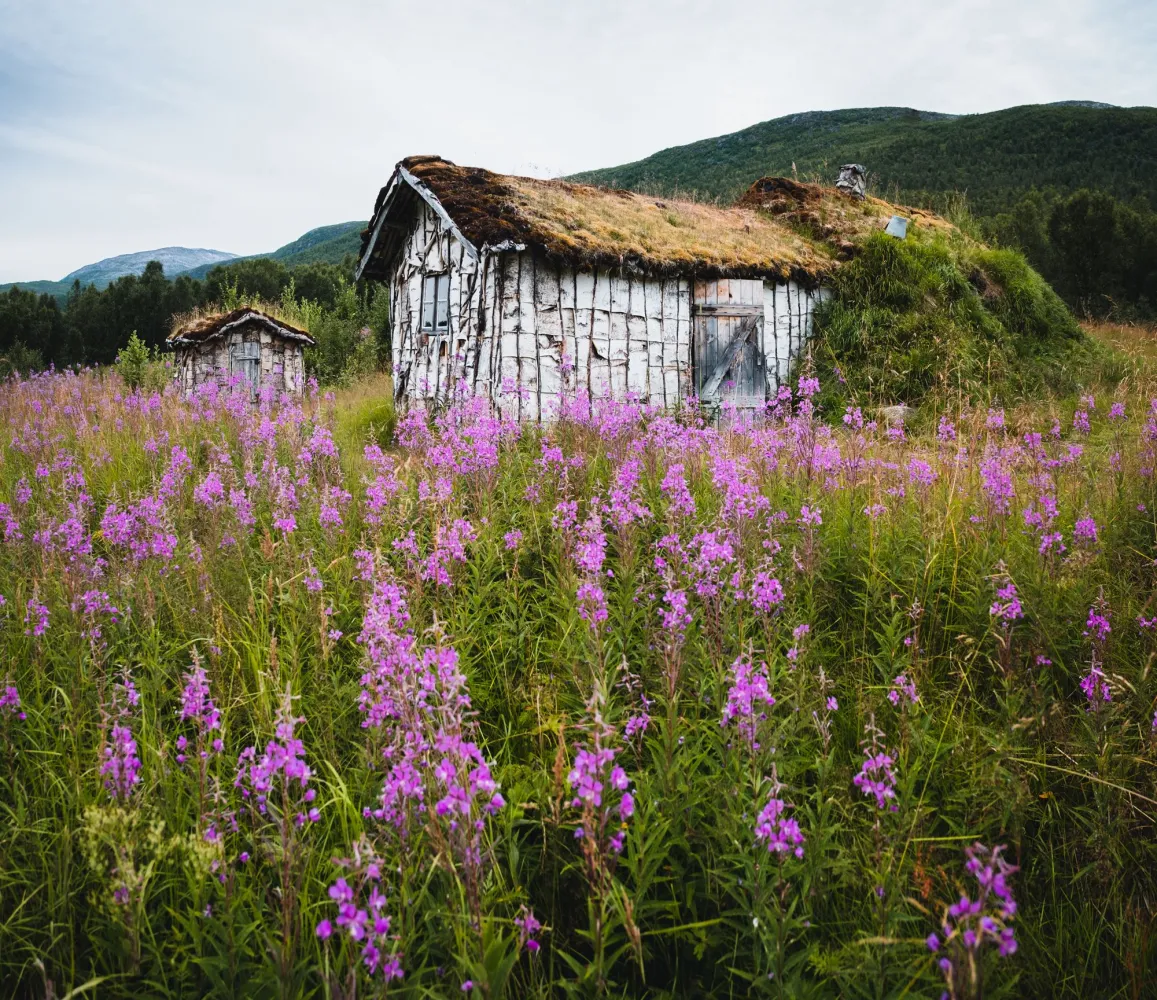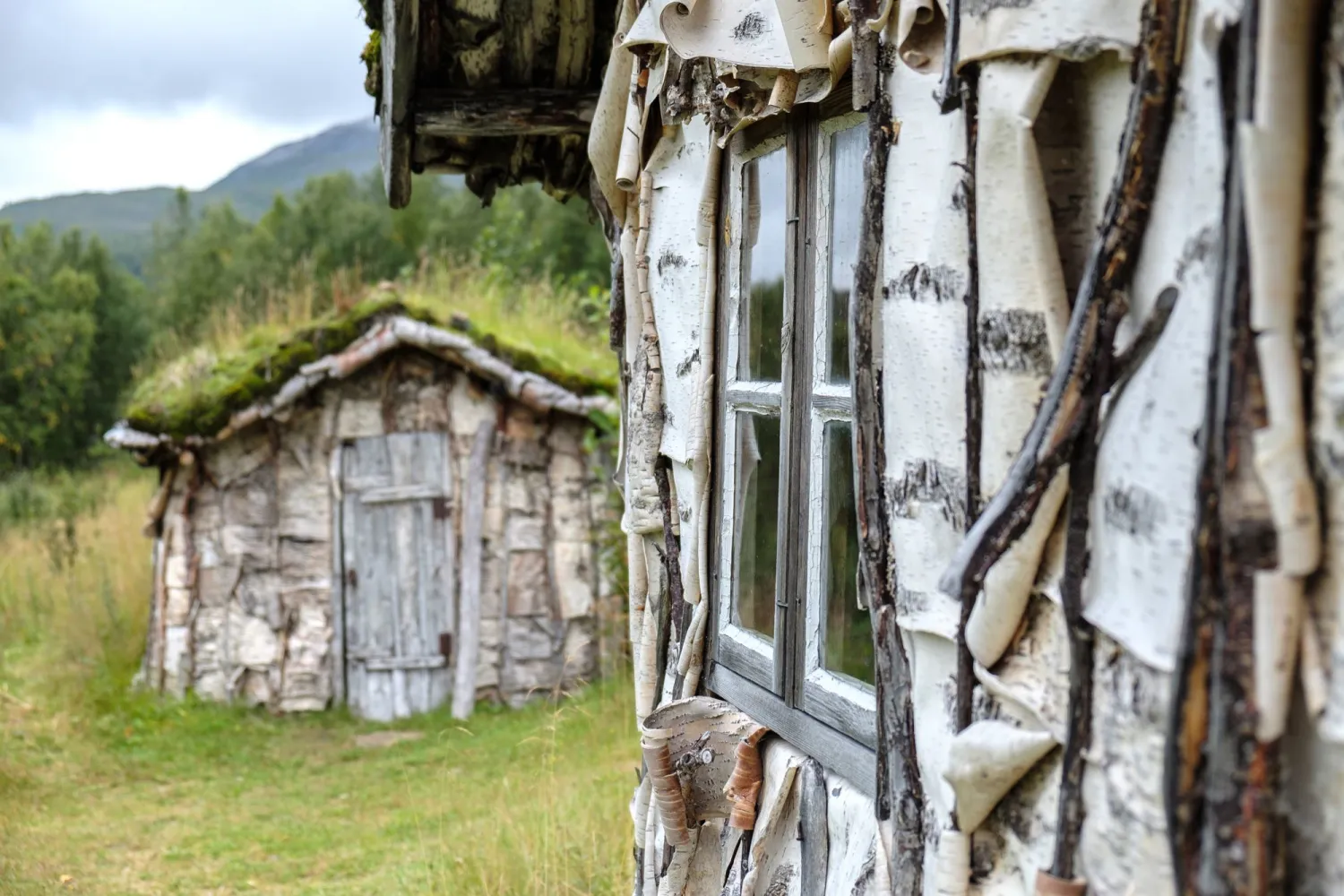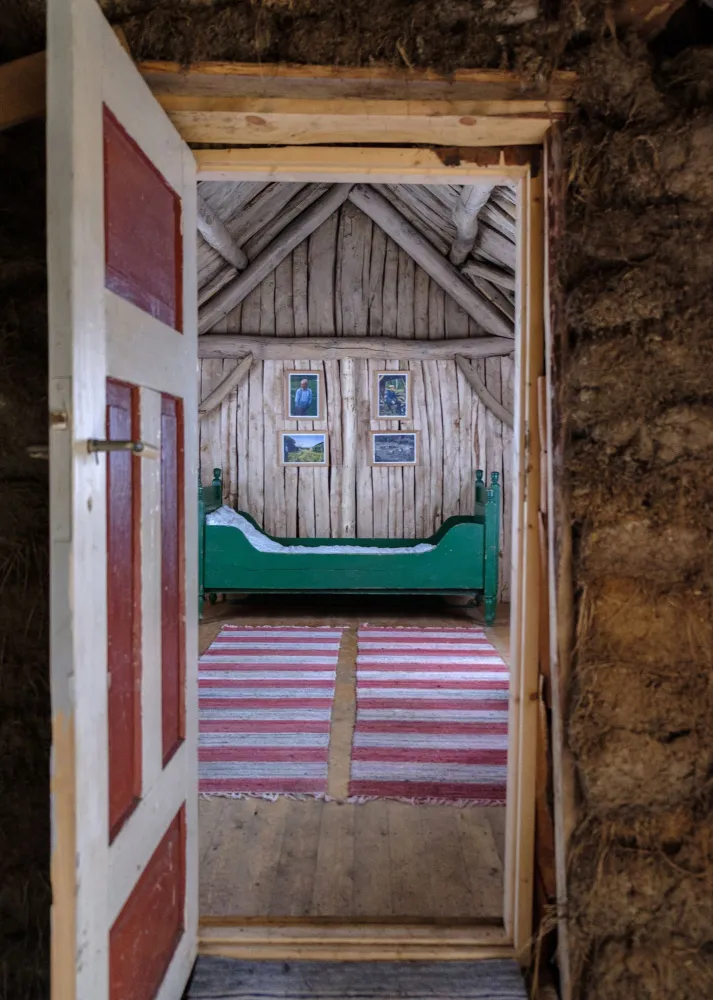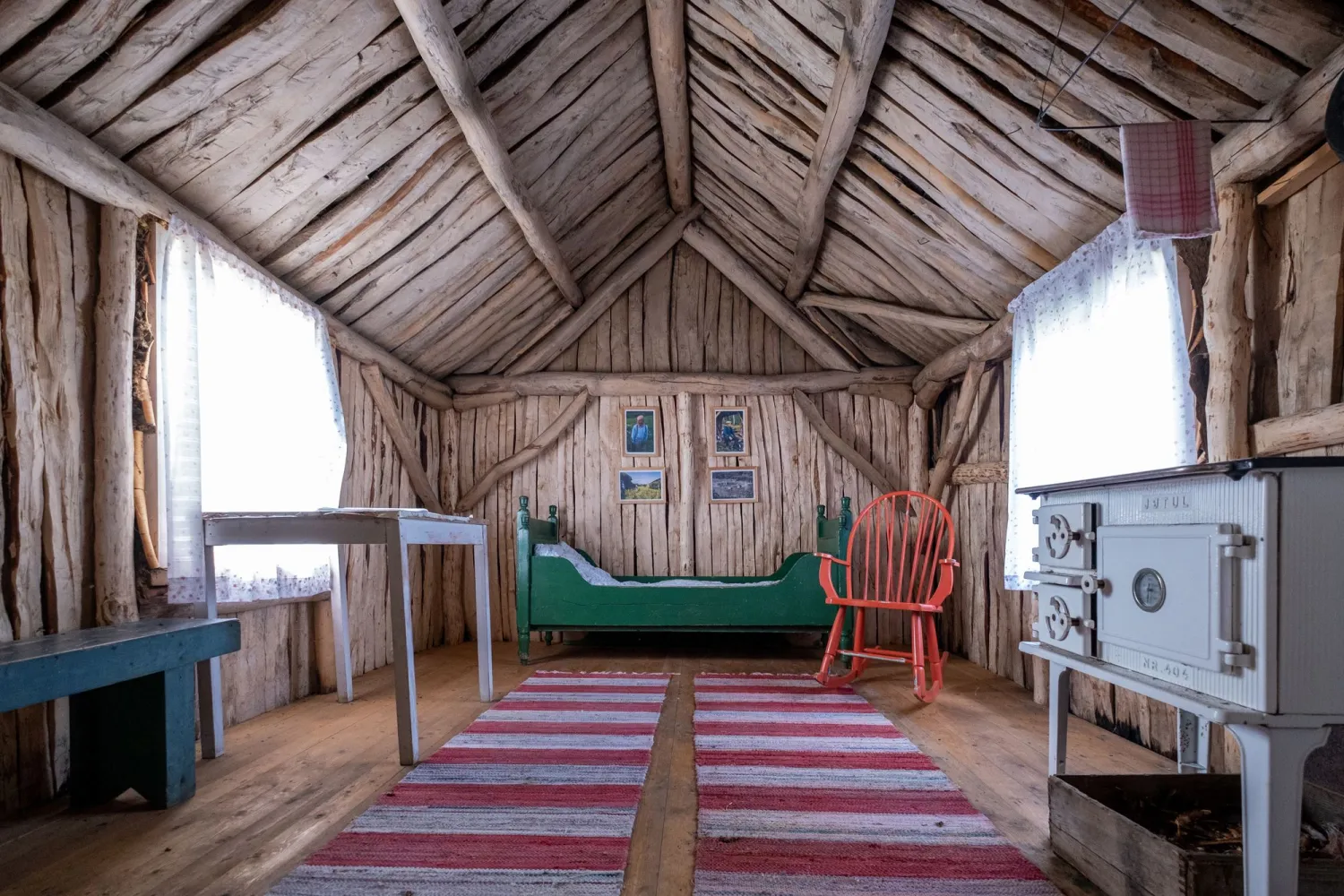Kaperdalen Sami museum
In Kaperdalen, the Midt-Troms Museum has two land-Sami settlements that were cleared just after the year 1900
Kaperdalen is one of the best preserved land-Sami settlements in Norway and was the last settlement the Sami used on the island of Senja. The main settlement is located at the lower part of the Kaperdalen valley. Here, in a clearing in the woods, is where we will find the peat dens that were used. A path leads up to “the bear den”, which was used as a potato cellar.
From Ner-Kaperdalen another path, just under a kilometer in length, will lead up to the neighboring settlement in Øver-Kaperdalen. Here we find the remnants of another traditional Sami peat den, built by other residents who settled in the valley.
Kaperdalen is located in Tranøy municipality.
About the land-sami
Descendants of Swedish reindeer herding Sami were the ones who settled on the Norwegian coast at the end of the 18th century. In the inland villages, which were considered distant in relation to the coastal farms, they created a way of life based on agriculture, seasonal fishing and the foraging of forests, mountains, rivers and lakes. The settlement in Øver-Kaperdalen was cleared and gradually the settlement in Ner-Kaperdalen was also cleared.
The Sami in Kaperdalen are known to have had about four cows, as well as some goats and sheep distributed in the two settlements. Food was foraged in the surrounding woods and production took place at the clearing in the forest. In this natural based diet, wild berries, watercress and other edible plants were important food and vitamin supplements.
Around this time the bear that was residing in the local den had left Senja, and the den could then be used as a potato cellar. Down by the Kaperdal-river they could fetch water all year round from a pool that never froze, which could also be used as a refrigerator.
About the sami peat dens
The houses are built of materials from the valley. They have birch wood frames with birch bark and peat cladding. Outbuildings have walls clad with birch bark. The barn and goat barn, which was also peat dens, have walls padded with birch branches and twigs.
About Nikolai
The last person to live in Kaperdalen was Nikolai Olsen Kaperdal who was born in 1905. His father died when Nikolai was fifteen years old. This caused young Nikolai to become even more responsible for the family household. He did as most land-Sami, he went looking for the opportunities and advantages that presented themselves, like raising foals for sale. Nikolai also joined the Lofoten-fishery, like some other land-Samis did.
The peat den was a good house, for it required no cash-payments, only maintenance. Nevertheless, a peat den does not last much longer than approximately thirty to fifty years. When Nikolai was to rebuild his peat den in the late 1940s, he received help from another local peat den builder. This led to his peat den being built in a northern-Norwegian style with a straight birch trunk frame, in contrast to a Sami peat den that has curved trunks.
Nikolai Kaperdal did not live up to all the myths about the simple life of the land-Sami. In 1929 he bought a T-Ford and became the first taxi driver on Senja island. At this time, there were not many residents on Senja island who had a car.
There are many stories told about Nikolai Kaperdal. One is about the time he went by motorcycle to Tranøybotn and picked up his girlfriend Alvilde. She left her current marriage and moved with him to a woodshed peat den. Together with Alvilde, Nikolai was the last to move from Kaperdalen.
Access
There is a marked footpath from the car park by the main road down to the settlement in Ner-Kaperdalen.
Opening hours:
Kaperdalen Sami museum is an all-year accessible open-air museum.
Group visits can be arranged by calling +47 478 34 500 or by e-mail at post@mtmu.no.
From Ner-Kaperdalen another path, just under a kilometer in length, will lead up to the neighboring settlement in Øver-Kaperdalen. Here we find the remnants of another traditional Sami peat den, built by other residents who settled in the valley.
Kaperdalen is located in Tranøy municipality.
About the land-sami
Descendants of Swedish reindeer herding Sami were the ones who settled on the Norwegian coast at the end of the 18th century. In the inland villages, which were considered distant in relation to the coastal farms, they created a way of life based on agriculture, seasonal fishing and the foraging of forests, mountains, rivers and lakes. The settlement in Øver-Kaperdalen was cleared and gradually the settlement in Ner-Kaperdalen was also cleared.
The Sami in Kaperdalen are known to have had about four cows, as well as some goats and sheep distributed in the two settlements. Food was foraged in the surrounding woods and production took place at the clearing in the forest. In this natural based diet, wild berries, watercress and other edible plants were important food and vitamin supplements.
Around this time the bear that was residing in the local den had left Senja, and the den could then be used as a potato cellar. Down by the Kaperdal-river they could fetch water all year round from a pool that never froze, which could also be used as a refrigerator.
About the sami peat dens
The houses are built of materials from the valley. They have birch wood frames with birch bark and peat cladding. Outbuildings have walls clad with birch bark. The barn and goat barn, which was also peat dens, have walls padded with birch branches and twigs.
About Nikolai
The last person to live in Kaperdalen was Nikolai Olsen Kaperdal who was born in 1905. His father died when Nikolai was fifteen years old. This caused young Nikolai to become even more responsible for the family household. He did as most land-Sami, he went looking for the opportunities and advantages that presented themselves, like raising foals for sale. Nikolai also joined the Lofoten-fishery, like some other land-Samis did.
The peat den was a good house, for it required no cash-payments, only maintenance. Nevertheless, a peat den does not last much longer than approximately thirty to fifty years. When Nikolai was to rebuild his peat den in the late 1940s, he received help from another local peat den builder. This led to his peat den being built in a northern-Norwegian style with a straight birch trunk frame, in contrast to a Sami peat den that has curved trunks.
Nikolai Kaperdal did not live up to all the myths about the simple life of the land-Sami. In 1929 he bought a T-Ford and became the first taxi driver on Senja island. At this time, there were not many residents on Senja island who had a car.
There are many stories told about Nikolai Kaperdal. One is about the time he went by motorcycle to Tranøybotn and picked up his girlfriend Alvilde. She left her current marriage and moved with him to a woodshed peat den. Together with Alvilde, Nikolai was the last to move from Kaperdalen.
Access
There is a marked footpath from the car park by the main road down to the settlement in Ner-Kaperdalen.
Opening hours:
Kaperdalen Sami museum is an all-year accessible open-air museum.
Group visits can be arranged by calling +47 478 34 500 or by e-mail at post@mtmu.no.


 Kontakt oss
Kontakt oss 